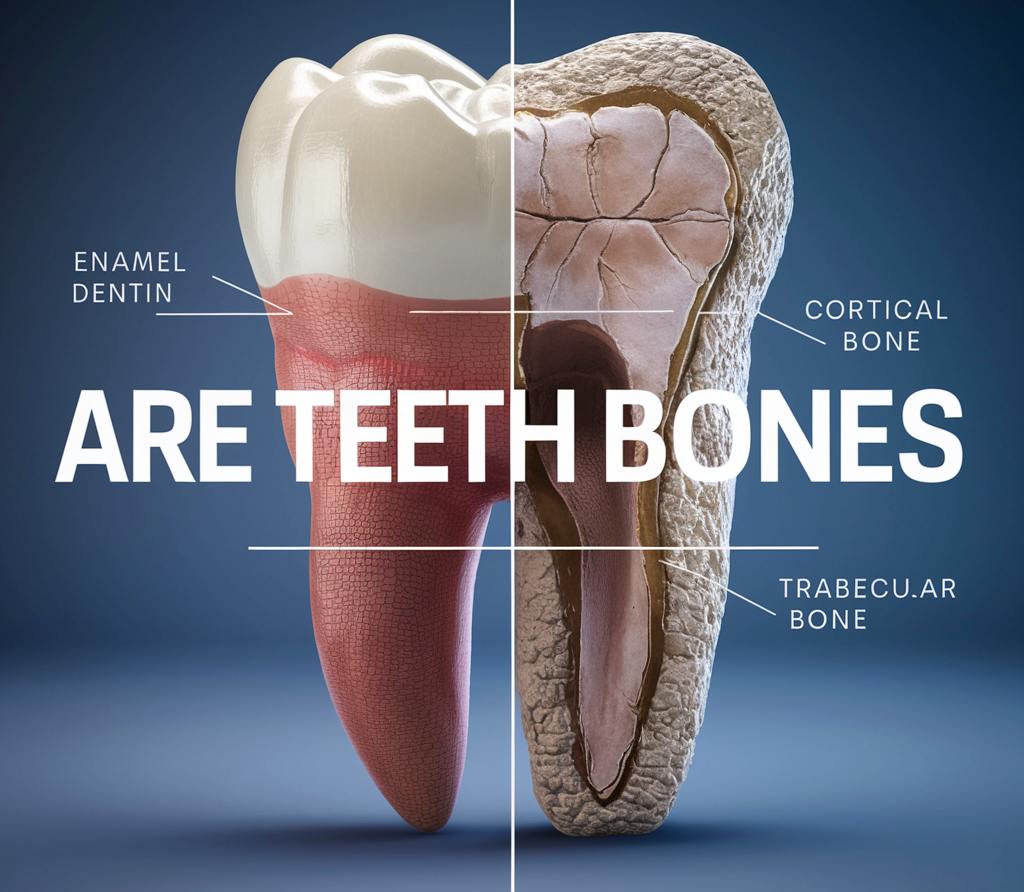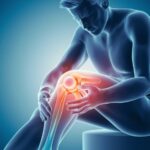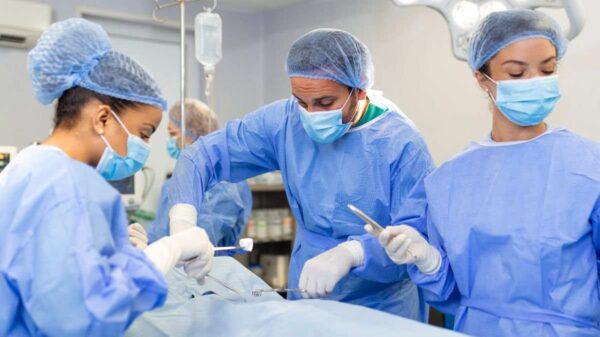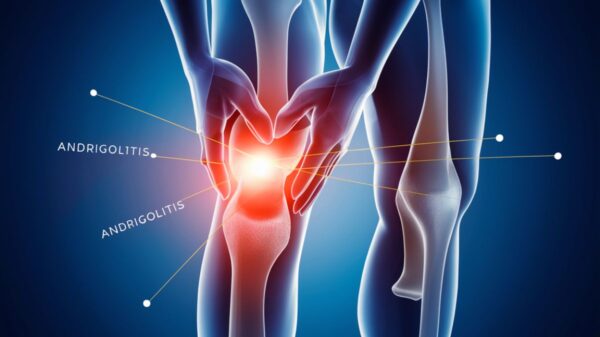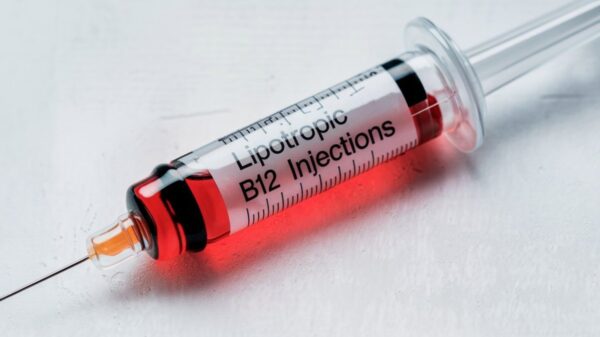Teeth and bones share a few similarities that often lead people to wonder if teeth are bones. Both are solid, rigid structures in the body, composed of minerals like calcium and play essential roles in maintaining our overall health. However, despite these similarities, teeth are not bones. This blog post will explore differences between teeth and bones, why they are classified differently, and what that means for your oral health.
Are Teeth Bones?
No, teeth are not bones. Although teeth and bones contain calcium, they are distinct structures with different compositions, functions, and regenerative abilities.
While bones are dynamic living tissues capable of continuous growth and repair, teeth are specialized structures with specific layers such as enamel, dentin, and pulp. Unlike bones, teeth do not naturally regenerate or repair themselves. Once enamel, the hardest substance in the human body, is damaged, it cannot heal independently.
What Are Teeth Made Of?
Teeth have several components that give them their unique properties:
- Enamel: The outermost layer is made primarily of calcium phosphate. It is incredibly tough, making it the hardest substance in the body. However, it lacks living tissue and cannot regenerate.
- Dentin: Beneath enamel lies dentin, which forms the bulk of the tooth. Dentin is softer & more vulnerable to decay but strengthens and supports the tooth structure.
- Pulp: The centre of the tooth contains the pulp, which comprises living tissue, including nerves, blood vessels, and connective tissue. The pulp nourishes the tooth and provides sensation.
The unique composition of teeth—especially enamel—distinguishes them from bones, which contain collagen fibres and hydroxyapatite crystals, making them strong but flexible.
What Are Bones Made Of?
Unlike teeth, bones are living tissues that continuously remodel themselves. The composition of bones includes:
- Collagen fibres – These provide flexibility and resilience.
- Hydroxyapatite crystals – A form of calcium phosphate that gives rigidity and strength.
Bones are not static; they constantly undergo remodelling, where old bone tissue is broken down & replaced by new tissue. This regenerative process is a critical feature that helps bones heal after fractures and adapt to mechanical stresses.
Key Differences Between Teeth and Bones
While teeth and bones have some structural similarities, their functions and regenerative abilities differ vastly. Here’s a quick comparison:
| Feature | Teeth | Bones |
|---|---|---|
| Composition | Enamel, dentin, pulp | Collagen fibers, hydroxyapatite |
| Growth and Repair | Limited; cannot regenerate naturally | Dynamic; continuously remodel and heal |
| Function | Chewing, speech, appearance | Structural support, protection, movement |
| Hardness | Enamel (hardest substance in the body) | Strong but flexible |
Are Teeth Made of Calcium?
Yes, teeth are primarily made of calcium phosphate, which gives them their strength. The enamel on the outside of the tooth has about 96% mineral content, including calcium phosphate. Dentin and cementum, though less mineralized, also contain calcium phosphate, but they are more sensitive and vulnerable to damage.
Are Teeth Rocks or Bones?
Teeth are neither rocks nor bones, though they may appear similar in specific ways. Teeth are biological tissues, while rocks are inorganic substances with no living tissue. Unlike bones, teeth do not have living cells in their outer layers (like enamel), and unlike rocks, they are dynamic, evolving structures made up of different tissues with specialized functions.
What are teeth classified as if they are not bones?
Teeth are often classified as calcified structures rather than bones. Their rugged, mineral-rich nature makes them similar to bones, but their structure and inability to regenerate differentiate them from bones. Teeth are specialized organs essential for breaking down food, contributing to speech, and enhancing facial appearance. They perform specific roles vital to our health but cannot repair themselves naturally.
Are Teeth Organs?
Yes, teeth can be considered organs. An organ typically comprises multiple tissues working together to perform a specific function. Since teeth are composed of enamel, dentin, cementum, and pulp, all of which serve different functions, they qualify as organs. They perform vital roles in digestion, speech, and facial structure, further supporting their organ classification.
Key Takeaways:
- Teeth are not bones. While both contain calcium and are vital to your body’s function, they differ in composition, growth, and regenerative abilities.
- Teeth consist of enamel, dentin, and pulp, whereas bones are made of collagen and hydroxyapatite and are constantly remodelled.
- Teeth are specialized organs in the digestive system, essential for breaking down food and aiding speech.
- Teeth cannot regenerate like bones. Damage to enamel, for instance, cannot be repaired by the body and requires dental intervention.
Tips for Protecting Your Teeth
To maintain healthy teeth, it’s essential to incorporate good habits into your daily routine:
- Brush regularly: Use fluoride toothpaste and brush at least twice a day.
- Floss daily: Flossing removes plaque & food particles between your teeth and below the gumline.
- Limit sugary foods: Sugary snacks & drinks can lead to cavities and enamel erosion.
- Stay hydrated: Drink plenty of water to help wash away food particles and bacteria.
- Visit your dentist regularly: Regular check-ups help detect and prevent potential dental problems early.
- Use a mouthguard if needed: For teeth grinding or contact sports, a mouthguard can help protect your teeth from damage.
Conclusion
Understanding the differences between teeth and bones is crucial for maintaining good oral health. Although both are mineralized structures in the body, teeth have distinct characteristics that make them specialized organs. Their ability to function in chewing, speech, & appearance is unparalleled, but they require consistent care to stay healthy, as they cannot regenerate like bones. Regular brushing, flossing, and dental check-ups ensure your teeth remain in optimal condition.

